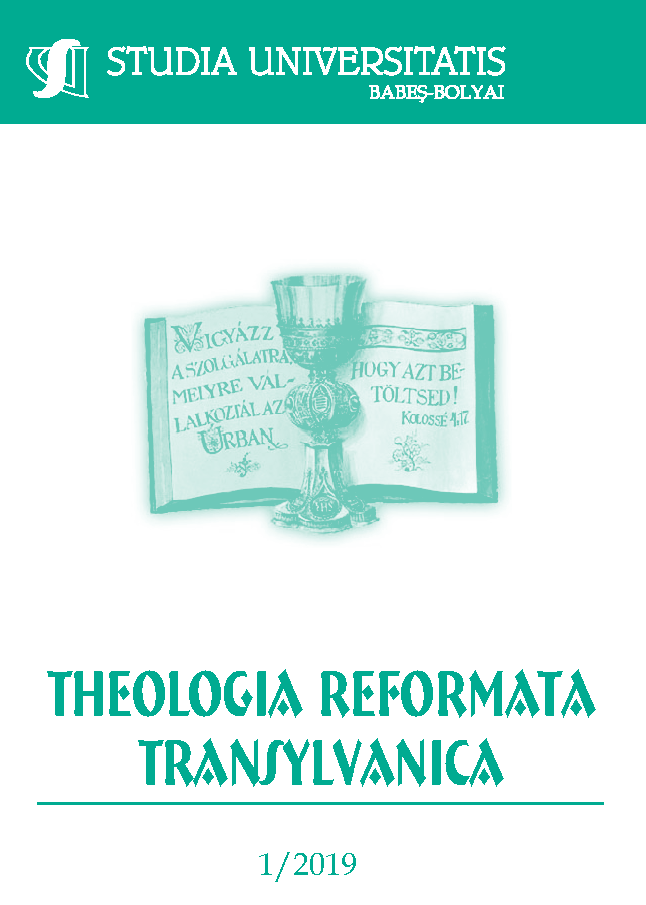Hogyan kerültek kalotaszegi varrottasok a királylány kelengyéjébe?
DOI:
https://doi.org/10.24193/subbtref.64.1.18Keywords:
protestant sense of mission, manses and culture/civilization, Gyarmathy Zsigáné, embroideries from Călata region (Kalotaszeg), home-industryAbstract
Why Are There Traditional Embroideries from Călata Region (Kalotaszeg) in the Dowry of a Princess?[1]
The study has three major units:
- A) Protestantism and social engagement. In the Hungarian Protestantism it is common and a tradition to be socially engaged. One can’t be indifferent in the case of social issues, but has to declare God’s glory in the world through having a responsible approach to their community in social, economic and cultural respects.
- B) The culture-historical role of pastor’s families. The walls of a manse are made of glass – as the Hungarian saying says the life of the pastor and their family has always been interesting to the outer world. After the period of illuminism, but more in the 19th century the residents of the manse consciously assumed the role of being an example. They readily undertook the duty of social organisation, the one of spreading culture, and educating the people.
- C) The exemplary voluntary work of Gyarmathy Zsigáné. The lady presented in the study was born in the middle of the 19th century as a pastor’s daughter, with her husband they have coordinated and made a considerable contribution to the cultural, social life of Călata (Kalotaszeg) region in Transylvania. She took the beautiful handmade embroideries sewed by the countrywomen to world fairs, and promoted this kind of traditional craft through her assiduous publicistic work. She formed friendships with painters, ethnographers, fashion designers, won the support of noble women from around Europe, using her network she popularized the embroideries, so they reached America, queens in European royal courts, Parisian, Viennese salons. With her writings she aided the picturesque but dismally poor region with waking demand for the embroideries, so opening the door to home-industry, which was almost life-saver for the country- This helped not only to lessen the economic hardship, but also to save the values of folk art from sinking into oblivion, this way the techniques and the pristine patterns have been passed on to the coming generations and they can still be admired as a decoration of many reformed churches in Călata region (Kalotaszeg).
[1] „This work was supported by a grant of the Romanian Ministry of Research and Innovation, CCCDI - UEFISCDI, project number PN-III-P1-1.2-PCCDI-2017-0326 /49 PCCDI, within PNCDI III”.
References
Teológiai művek:
BONHOEFFER, Dietrich: Etika – Útkészítés és bevonulás, EXIT Kiadó, Kolozsvár, 2015.
CHAPMAN, Gary: The Five Love Languages: How to Express Heartfelt Commitment to Your Mate. Northfield Publishing. ISBN 978-1881273158, 1995
KANTZENBACH, Friedrich Wilhelm: Zur kirchen- und kulturgeschichtlichen Bedeutung des evangelischen Pfarrhauses- Streiflichter und Schwerpunkte, In Hg. RIESS, Richard (Hg): Haus in der Zeit – Das evangelische Pfarrhaus heute, Kaiser Ver-lag, München, 1979, 42-62.
KÓSA László: Kereszténység és magyar népi kultúra, In: Tartozni valahová – Protestantizmus és református azonosságtudat, Koinónia Kiadó, Kolozsvár, 2009, 38-57.
KOZMA Zsolt: A lelkipásztor és presbiter részvétele a közéletben, In: Másképpen van megírva, Az Erdélyi Református Egyházkerület kiadása, Kolozsvár, 2007, 104-108.
KOZMA Zsolt: A református értelmiség megújulása, In: Önazonosság és küldetés, Az Erdélyi Református Egyházkerület kiadása, Kolozsvár, 2001, 50-57.
RAVASZ László: Isten rostájában I. Budapest, Franklin-Társulat, 1938.
RAVASZ László: Legyen világosság. I., Budapest, Franklin-Társulat, 1938.
STECK, Wolfgang: Im Glashaus: Die Pfarrfamilie als Sinnbild christlichen und bürgerlichen Lebens, In: GREIFFENHAGEN, Martin (Hg.): Das evangelische Pfarrhaus – Eine Kultur- und Sozialgeshichte, Kreuz-Verlag, Stuttgart, 1984, 109-127.
SZŰCS Ferenc: Karizma, ordo, ordináció, - tisztség, rend és rendszer a jövendő egyházában, In: THÉMA (Theológiai Élet Ma), VI. évfolyam, 2-3.szám, Protestáns Tanulmányi Kör folyóirata, Budapest, 2004, 1-5.
TŐKÉCZKI László: Keresztyén hit és kultúrprotestantizmus, In: THÉMA (Theológiai Élet Ma), II. évfolyam, 2-3. szám, Protestáns Tanulmányi Kör folyóirata, Budapest, 2000, 80-86.
VASADY Béla: A lelkipásztori tiszt és hivatás Ravasz László gondolatvilágának tükrében, Az Igazság és Élet Füzetei -27., Debrecen, 1942.
Gyarmathyné írásai és vele kapcsolatos művek:
Az Erdélyi Múzeum Egyesület Évkönyve – 1914, Szerk. Erdélyi Pál, Kolozsvár, Kiadja Az Erdélyi Múzeum Egyesület, 1915.
S. BARTHA Éva: Kalotaszeg nagyasszonya, In: Korunk, 1973/11, 1735-1737.
BUZÁS Pál: Kalotaszegi kötődések, Művelődés Egyesület – Szentimrei Alapítvány, Kolozsvár-Sztána, 2008.
FARAGÓ József: A kalotaszegi népviselet irodalma, In: FARAGÓ József - NAGY Jenő - VÁMSZER Géza: Kalotaszegi magyar népviselet, Kriterion Könyvkiadó, Buka-rest, 1977.
FLETCHER, Margaret: Sketches of life and character in Hungary, with illustrations by Le QUESNE, Rose, London, Swan Sonnenschein et Co, 1892.
GÁL István: Crane Walter kalotaszegi rajzai. Ethnographia, LXXVIII (1967). 577-584.
GYARMATINÉ: A hegyek közül (novella); Budapest, 1886.
GYARMATHY Zsigáné: Az ifjú pap (regény, első kiadás 1885), Művelődés Egyesület – Szentimrei Alapítvány, Kolozsvár-Sztána, 2014.
GYARMATHY Zsigáné: A havasok alján (elbeszélések, első kiadás 1891), Művelődés Egyesület – Szentimrei Alapítvány, Kolozsvár-Sztána, 2015.
GYARMATHY Zsigáné: Tarka képek a kalotaszegi varrottas világából, Franklin-Társulat, Budapest, 1896., Online forrás: https://archive.org/stream/tarkakepekkalota00gyar#page/n3/mode/2up (Utolsó letöltés: 2018. 12.10.)
GYARMATHY Zsigmond: Digitális Képarchívum: Online forrás: http://dka.oszk.hu/html/kepoldal/index.phtml?id=038057, (Utolsó letöltés: 2018. 12.10.)
Dr. JANKÓ János, Kalotaszeg magyar népe. Néprajzi tanulmány, Athenaeum, Budapest, 1892, Online forrás: http://mek.oszk.hu/13800/13816/13816.pdf, (Utolsó le-töltés: 2018. 12.10.)
Kalotaszeg repertórium, Összeállította: JANKÓ Tünde, Online forrás: http://www.bibl.u-szeged.hu/porta/szint/egyeb/katalog/kalotasz/kalotasz.htm, (Utolsó letöltés: 2018. 12.10.)
Kalotaszegi varrottas-album. (Régi magyar hímzés-minták gyűjteménye.) Szerkesztik: Péntsy József és Szentgyörgyi Lajos. Kolozsvár, 1888. 16. (Erdélyi Magyar Közművelődési Egylet, Budapest, 1888)
KÓSA László: Kalotaszeg ösvényein. Tiszatáj, Szeged 1972/11. Online forrás: file:///C:/Users/user/AppData/Local/Temp/tiszataj_1972_011_064-069.pdf, (Utolsó letöltés: 2018. 12.10.)
MALONYAY Dezső: A kalotaszegi magyar nép művészete. I. kötet, Budapest, Franklin-Társulat, Magyar Irod. Intézet és Könyvnyomda, 1907, Online forrás: http://mek.oszk.hu/01600/01671/html/index.html (Utolsó letöltés: 2018. 12.10.)
SEBESTYÉN Kálmán: „Kalotaszeg Nagyasszonyának” szobra Kolozsváron, In: Honismeret, 2015/2, 39-40.
SINKÓ KALLÓ Katalin: Kalotaszegi nagyírásos, Kriterion Könyvkiadó, Bukarest, 1980.
TÖRÖK Zsuzsa: Gyarmathy Zsigáné Hory Etelka hagyatéka kolozsvári közgyűjteményekben, Ethnographia 2016/2., 291–297.
TÖRÖK Zsuzsa: A kalotaszegi asszony: Gyarmathy Zsigáné - Írónői életpálya a 19. századi nemzetépítés kontextusában, Irodalomtörténet, 2016/4., 431-454.
VINCZE Zoltán: Gyarmathy Zsigáné szobra Kolozsváron. Kalotaszeg, 2001. 3.
ZSINDELYNÉ TÜDŐS Klára: Csizma az asztalon, Harmat Kiadó Alapítvány, Buda-pest, 2003.
Downloads
Published
How to Cite
Issue
Section
License
Copyright (c) 2019 Studia Universitatis Babeș-Bolyai Theologia Reformata Transylvanica

This work is licensed under a Creative Commons Attribution-NonCommercial-NoDerivatives 4.0 International License.






